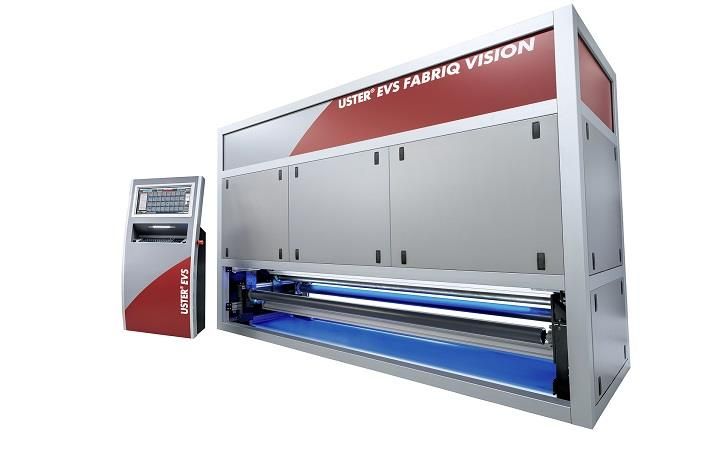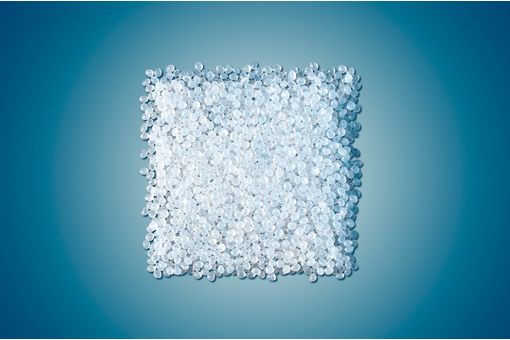Interviews
News Flash
Uster fabric inspection systems cut waste & improve yield
11 Nov '20
3 min read

Pic: Uster Technologies
Uster, a provider of quality management solutions from fibre to fabric, has unveiled its fabric inspection solutions that cover the value chain from weaving to finishing. The ingenious design of Uster Q-BAR 2 and Uster EVS FABRIQ VISION fits every production line, delivering the right quality, while reducing waste and optimising fabric yield.
Uster Q-BAR 2 is attracting attention through its elegant and slim design, developed for simple installation on existing weaving machines. It represents the latest generation of on-loom monitoring and inspection systems, offering operational improvements for weavers. Positioned directly above the reed on each machine, Uster Q-BAR 2 is ideally located for earliest detection of fabric defects. This allows the operator to respond quickly to alarms and stop signals. Correcting problems immediately prevents quality issues from continuing, minimising material waste, the company said in a media statement.
Uster Q-BAR 2 categorises and saves fabric faults, creating a ‘defect map’ for each roll, which can be recalled and reviewed later via the intuitive touchscreen. The system offers different classification possibilities and allows rolls to be categorised according to number, size and position of defects, as well as customer criteria. It also grades rolls automatically. In summary, Uster Q-BAR 2 reduces the need for post-weaving inspection for most applications.
Fabric producers require a consistently high rate of defect detection and optimised efficiency in grading. Uster EVS FABRIQ VISION achieves this by using automated control during intermediate and final inspection, and by creating roll inspection charts. This removes the need for slow, costly and unreliable manual inspection, freeing operators to focus on higher-skilled jobs. The system’s ability to capture any visible defects allows users to optimise fabric yield.
Best results are achieved by the cut optimisation software module of Uster EVS FABRIQ VISION. This optimises fabric yield per class, according to the settings. During the inspection process, infrared ink is applied on the fabric. Defect positions are then synchronised with the cut optimisation software module. Using the infrared ink marks, the inspection table stops at exactly the right position for each defect, minimising the risk of errors.
The increasing demand for assured quality is a significant trend, and achieving it clearly requires automation. A major benefit of automation in fabric inspection is continuity in collecting objective data. This comes with the bonus of automatic data analysis by the Uster FABRIQ EXPERT quality system, with its fully-customisable reports displayed at the on-screen dashboard. For textile mills, online monitoring of the systems, with comprehensive statistics on inspected fabrics, and machine performance, serves to optimise production and facilitate automation. Uster FABRIQ EXPERT provides an overview of all connected Uster Q-BAR 2 systems in the mill. The main focus is to show quality information, for example the number of defects over a given time, within the relevant context, such as running status or production speed. Technical alarms are highlighted to trigger early reactions, so that problems can be solved as soon as they occur.
Uster Q-BAR 2 is attracting attention through its elegant and slim design, developed for simple installation on existing weaving machines. It represents the latest generation of on-loom monitoring and inspection systems, offering operational improvements for weavers. Positioned directly above the reed on each machine, Uster Q-BAR 2 is ideally located for earliest detection of fabric defects. This allows the operator to respond quickly to alarms and stop signals. Correcting problems immediately prevents quality issues from continuing, minimising material waste, the company said in a media statement.
Uster Q-BAR 2 categorises and saves fabric faults, creating a ‘defect map’ for each roll, which can be recalled and reviewed later via the intuitive touchscreen. The system offers different classification possibilities and allows rolls to be categorised according to number, size and position of defects, as well as customer criteria. It also grades rolls automatically. In summary, Uster Q-BAR 2 reduces the need for post-weaving inspection for most applications.
Fabric producers require a consistently high rate of defect detection and optimised efficiency in grading. Uster EVS FABRIQ VISION achieves this by using automated control during intermediate and final inspection, and by creating roll inspection charts. This removes the need for slow, costly and unreliable manual inspection, freeing operators to focus on higher-skilled jobs. The system’s ability to capture any visible defects allows users to optimise fabric yield.
Best results are achieved by the cut optimisation software module of Uster EVS FABRIQ VISION. This optimises fabric yield per class, according to the settings. During the inspection process, infrared ink is applied on the fabric. Defect positions are then synchronised with the cut optimisation software module. Using the infrared ink marks, the inspection table stops at exactly the right position for each defect, minimising the risk of errors.
The increasing demand for assured quality is a significant trend, and achieving it clearly requires automation. A major benefit of automation in fabric inspection is continuity in collecting objective data. This comes with the bonus of automatic data analysis by the Uster FABRIQ EXPERT quality system, with its fully-customisable reports displayed at the on-screen dashboard. For textile mills, online monitoring of the systems, with comprehensive statistics on inspected fabrics, and machine performance, serves to optimise production and facilitate automation. Uster FABRIQ EXPERT provides an overview of all connected Uster Q-BAR 2 systems in the mill. The main focus is to show quality information, for example the number of defects over a given time, within the relevant context, such as running status or production speed. Technical alarms are highlighted to trigger early reactions, so that problems can be solved as soon as they occur.
Fibre2Fashion News Desk (GK)
Popular News
Leave your Comments
Editor’s Pick
Pratik Gadia
The Yarn Bazaar - Filosha Infotech Private Limited
Fan Liyuan
JIANGSU YINGYANG NONWOVEN MACHINERY CO., LTD
Unenbat Ch.
GOBI Mongolian Cashmere USA Corp
































-Ltd..jpg?tr=w-120,h-60,c-at_max,cm-pad_resize,bg-ffffff)





.jpg?tr=w-120,h-60,c-at_max,cm-pad_resize,bg-ffffff)
.jpg?tr=w-120,h-60,c-at_max,cm-pad_resize,bg-ffffff)






